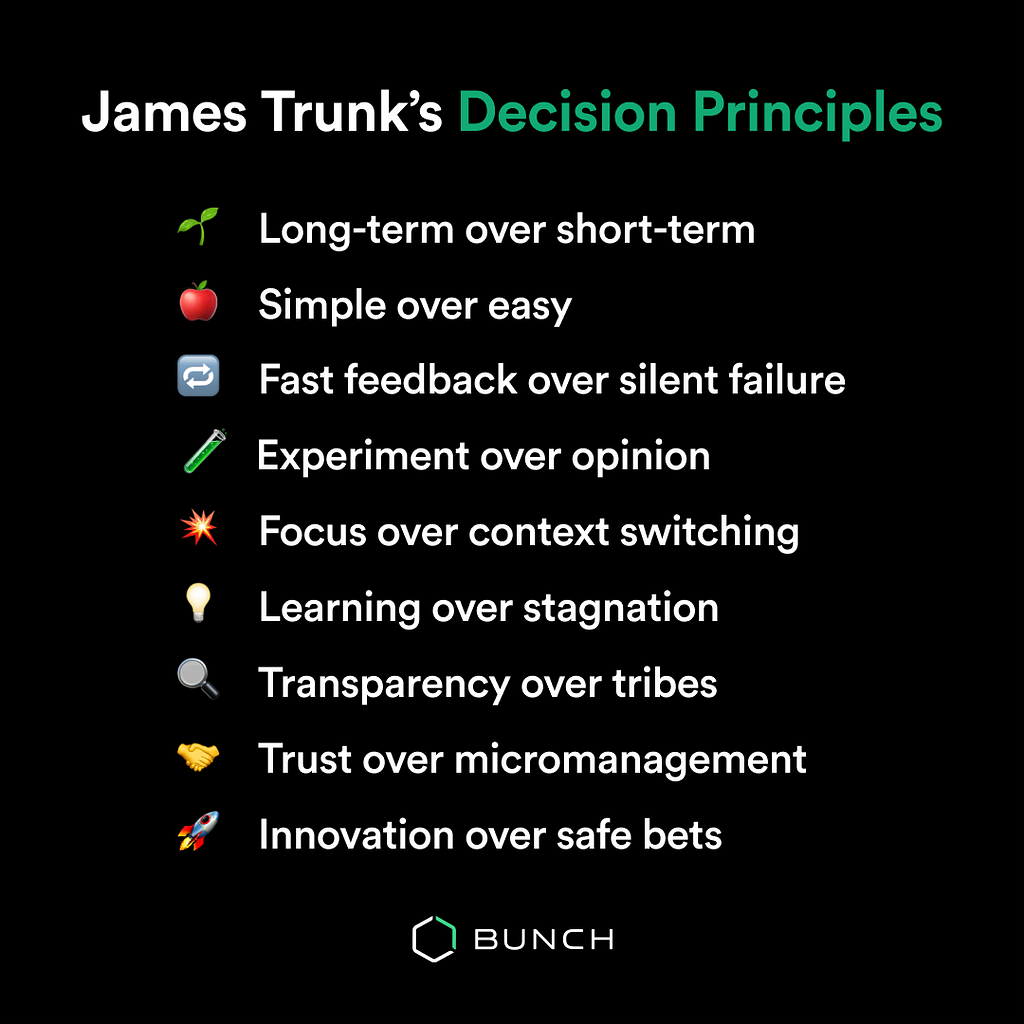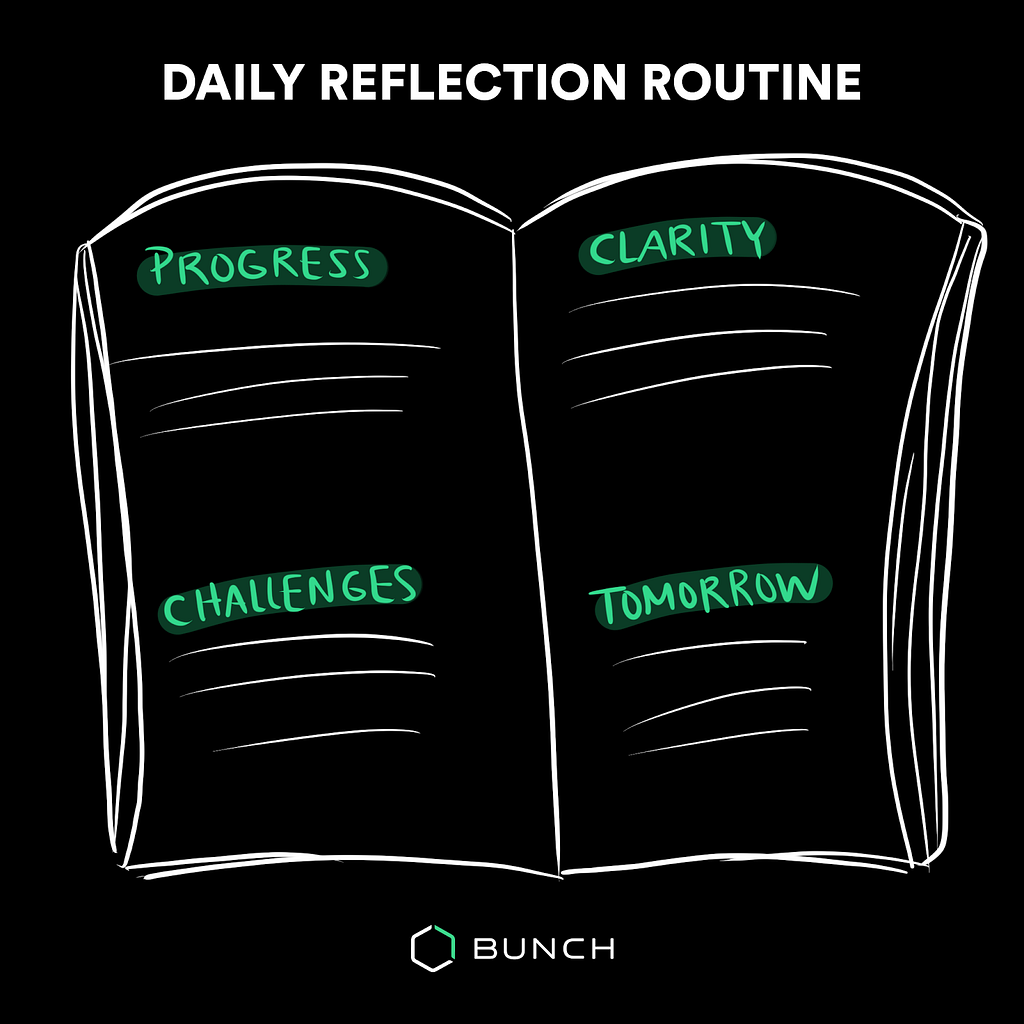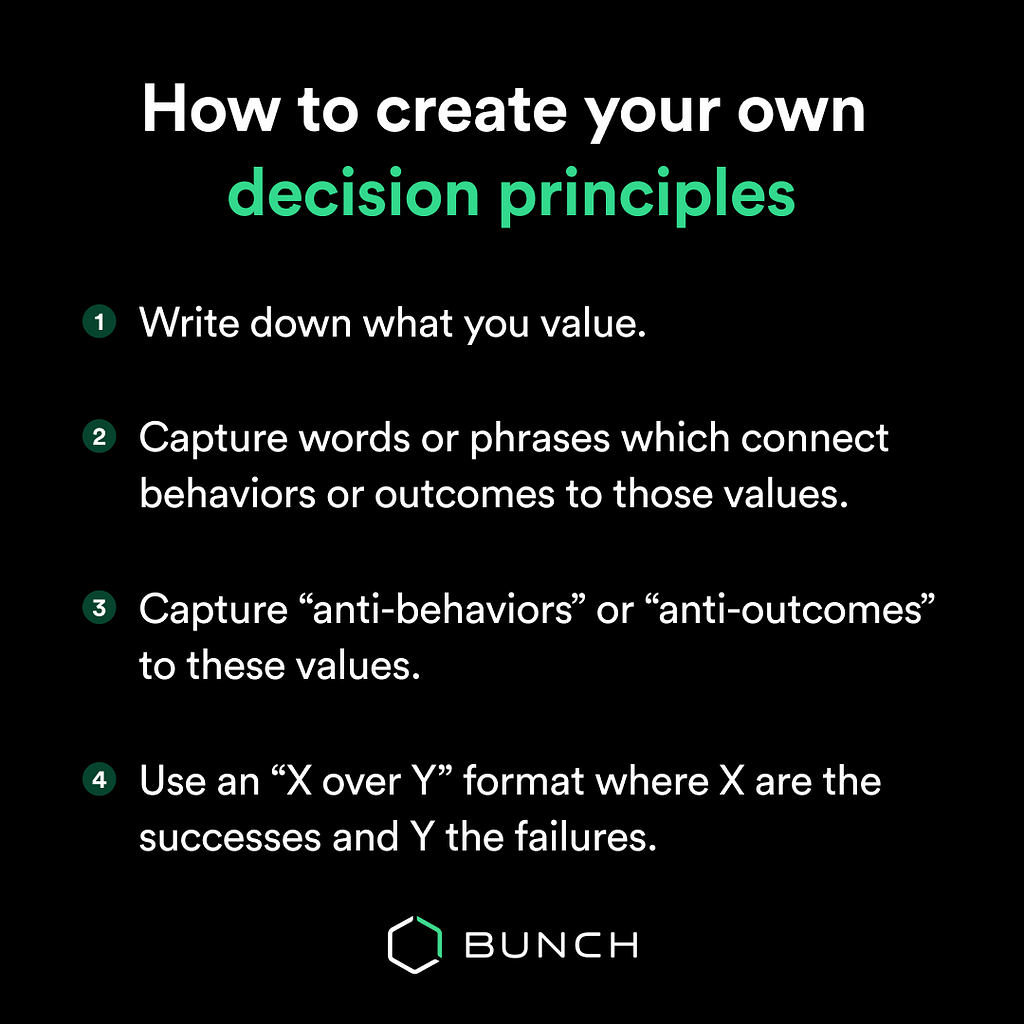This content originally appeared on Level Up Coding - Medium and was authored by Darja Gutnick
Leading through a screen has put a serious strain on teams and their keepers. How can you really convey passion, vision, thought processes, and empathy in that tiny Zoom window every day? This new way of working has forced leaders to be more intentional with how they lead and communicate.
To enable effective collaboration on his own team, James Trunk (VP of Engineering at Griffin) created his 9 decision principles.
In case you haven’t already read them, here they are:

Let’s dive into how James has defined and refined his principles, finishing off with some reflection questions and tactics so that you can create your very own.
How do you create time and space for thinking about things like your principles?
James: I spend 15 minutes at the end of each day reflecting on my learnings and challenges. I capture them in my work diary under the headings: progress, clarity, challenges, and tomorrow.

Tracking decisions, outcomes, and reflections at that level of granularity helps me to spot patterns. It also gives me a regular opportunity to reflect on high-level ideas, such as decision principles.
How did you settle on this format of ___ over ___? Did you ever have it another way?
James: My decision principles started life during a team values session in 2016. I worked closely with Ulrika, our team’s amazing agile coach, to prepare for the session. We discussed how much we liked the added guidance that the Agile Manifesto’s “X over Y” format gives, and decided to suggest it to the team.
The team loved our format idea, and by the end of the session we’d agreed on a list of five shared “X over Y” values.
I found myself frequently referring to our values during our decision meetings and design discussions, which helped with our decision making, communication, and alignment. Later I reflected on how I had started to use some of the values to guide my own decision making.
That’s when I had the epiphany on the usefulness of values for guiding decisions.
I asked myself the question: “if I were to come up with a personal list of values, explicitly designed to help me make better decisions, what would be on it?”

I came up with six “X over Y” values, two of which overlapped with our team values. Three of those original values are still in my list (simple over easy, experiment over opinion, and focus over context switching).
As my list changed and developed over time, I reflected on how “values” wasn’t the right word to describe them, and I switched to using “principles”.
What would you recommend to people who want this but are starting from zero?
James: I’d suggest starting by writing down what you value. From there you can try to capture words or phrases which connect positive behaviours or outcomes to those values. A mindmap might be a useful tool for this.
If you like the “X over Y” format, then you can also try to capture the “anti-behaviours” or “anti-outcomes” for each. Focus on where you’ve seen success versus failure. Then you can turn your successes into the “X”s and the failures into the “Y”s.

What are your favorite reflection questions to ask yourself when coming up with your principles?
- What behaviours have I seen that have led to success?
- What undesirable outcomes have I seen, and what were the behaviours connected to that?
- Which person or company has come the furthest in tackling this specific challenge, and what words do they use?
- What was the culture in the most successful team I’ve worked in?
- What was the culture in the least successful team I’ve worked in?
- What is the culture in the most successful teams or companies that I know about?
As you lead and grow, your principles will likely transform with you. James changed his own principles frequently during his first year of adopting them.
“I wrestled with what was important to me, which factors had made positive or negative impacts on the teams I’d worked with, and I tested the principles to see how much they helped with my day-to-day decision making.”
Principles are “living text.” What may be your version of truth with one team can change with another. Once you have your first draft, revisit them at a regular cadence — this reflection and update cycle will help you have a more pointed impact and lead with intention over time.
Want to make stronger decisions in half the time? Download the Bunch AI Leadership Coach app to become a better leader in 2 minutes a day.
Enjoyed what James had to say? Check out our Teams at Work Podcast episode featuring his journey from individual contributor to VP of Engineering here.
? Follow me on Twitter or check out our YouTube channel for more content on tech leadership.
? You can also subscribe to The Weekly Briefing, my Sunday leadership newsletter.
Use these principles to make any decision was originally published in Level Up Coding on Medium, where people are continuing the conversation by highlighting and responding to this story.
This content originally appeared on Level Up Coding - Medium and was authored by Darja Gutnick
Darja Gutnick | Sciencx (2021-04-21T23:45:28+00:00) Use these principles to make any decision. Retrieved from https://www.scien.cx/2021/04/21/use-these-principles-to-make-any-decision/
Please log in to upload a file.
There are no updates yet.
Click the Upload button above to add an update.
